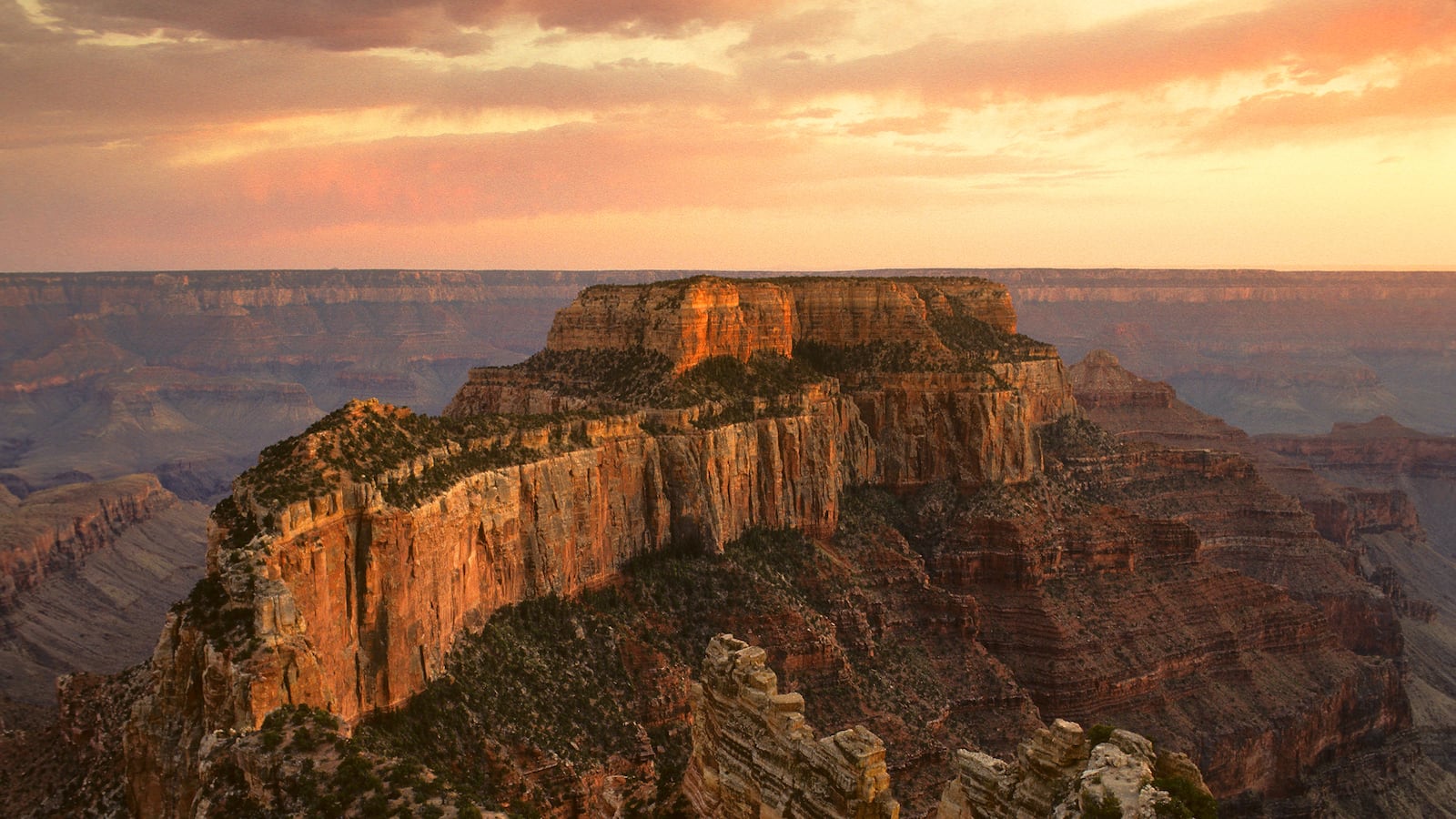If a collective of big money investment interests have their way, the 5 million people who flock to the Grand Canyon’s breathtaking vistas every year will also soon be able to get in some shopping and catch a film on an IMAX theatre built right on top of the canyon’s rim.
These investors have partnered with a faction of the native Navajo tribe’s leadership with promises of new jobs and gobs of money in exchange for—what else?—the land to build on. They want to construct a retail complex based around a tram that planners are calling the Escalade, which will stretch from the rim down to the floor, providing easy access to both a fragile ecosystem and sacred place to Native Americans.
Located on 420 acres of remote land that peers down upon the confluence–hence the name–of the Little Colorado and Colorado rivers, the project is expected to cost as much as a billion dollars. Among the retail shops, restaurants, and hotels on the upper rim, there would be the same below on the valley floor, along with stadium seating to take in the views, a museum, visitors center, and elevated river walk.
Before the word was co-opted to brand a 14-mile-per-gallon Cadillac SUV, an Escalade meant “a scaling or mounting by means of ladders, especially in an assault upon a fortified place.”
The group behind this project operates under the name Confluence Partners, LLC, and includes a variety of well-connected business and political types, as well as members of the Navajo tribe.
Surprisingly, much of the national publicity garnered by the proposal has ignored the involved parties, which include some characters. Among them is Arizona Senate member Albert Hale, a former president of the Navajo Nation until he “resigned” the post in 1998 rather than face indictment for 50 criminal charges, including bribery and accepting kickbacks. Another is former Apache County Superior Court Judge Michael C. Nelson, who stepped down from that position in 2004 to avoid charges of judicial misconduct.
While many in the Navajo leadership are pushing for the project, others feel this is just another bait-and-switch land grab or moneymaking scheme. Uniting under the name Save the Confluence, critics to the retail space have embarked on a campaign that includes using social media, protests, and art installations to make their opposition heard. Claiming that “more than 18 American Indian tribes call the confluence sacred,” they also cite environmental concerns and the region’s limited resources.
Save the Confluence is joined in their opposition by the National Park Service, though the agency has no jurisdiction. The project lies outside the National Park’s borders.
"They are serious threats to the future of the park," Park Superintendent Dave Uberuaga recently told the LA Times, referring to both the Escalade and another project, the Tusayan development, which would add thousands of new homes and millions of square footage of retail space to the national park’s gateway town. "When you have that size and scope of potential development that close to the park, it will impact our visitor experience."
Navajo supporters of the Escalade project claim the tribe will have more control over the area—and ultimately its own fate—by building the complex, and also cite the developer’s stated intent of updating and adding infrastructure like new roads. Currently, the area at the confluence is frequented by river rafters and nature lovers, who access it from a trail on neighboring Hopi land.
"They do all kinds of things down there. Eat, drink, fornicate, and we don't have the resources to do anything about it," Eric Shorty, a Navajo tribe member told azcentral.com. "This project will allow us to control who has access and what they do when they get there."
There is also the promise of much-needed jobs and economic stability, with Confluence Partners promising a thousand hospitality and maintenance positions to the region, which has 38 percent of its population at or below the poverty level. Attempts to verify these numbers uncovered some local dispute. A page on the project’s website that dealt with the job creation potential no longer works.
The Escalade and Tusayan developments aren’t the only threats looming up around the Grand Canyon.
If the thought of popping in to Olive Garden for some never ending breadsticks while a critically endangered California Condor spirals overhead isn’t horrifying enough, just last week a federal judge overturned a 20-year ban on uranium mining at a site just miles away from the canyon’s edge.
This decision, coupled with the potential Escalade and Tusayan projects, led to the Colorado River—the venerable, powerful river that carved out the Grand Canyon and provides water to 30 million people—being named our nation’s “most endangered river” by the American Rivers Association.
As for the Escalade project, it’s currently awaiting the final green light from the Navajo Nation Council, which could come as early as this spring. In the meantime, if you had been dreaming of a Grand Canyon vacation, better do it quick.






